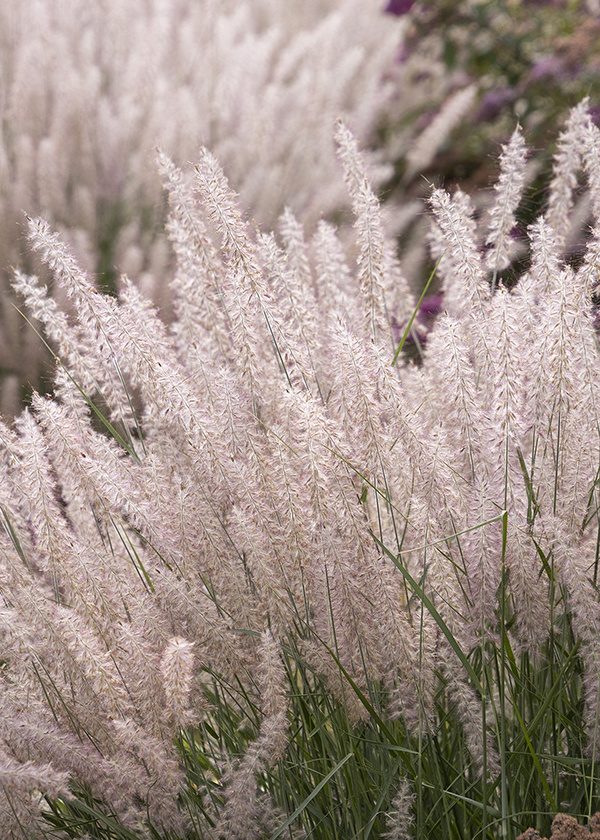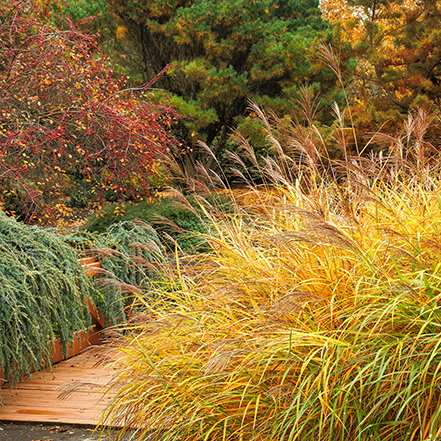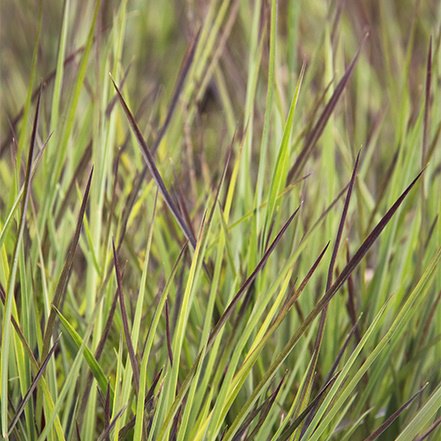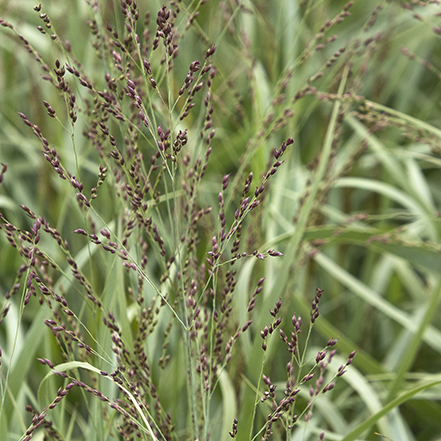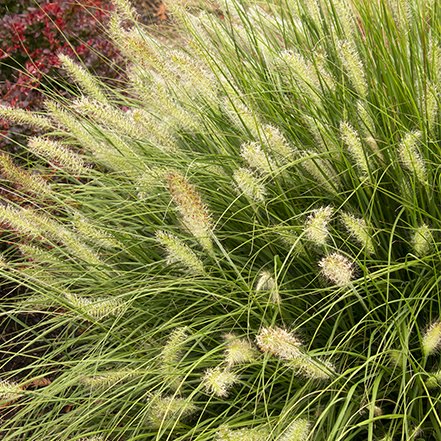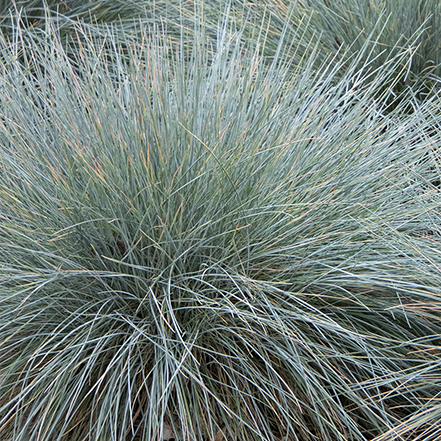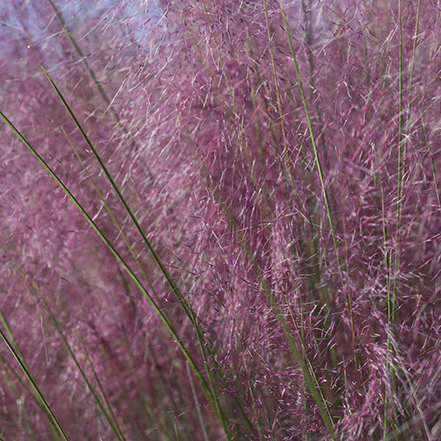Ornamental grasses add texture, movement, and year-round interest to your garden, but to keep them healthy and vibrant, cutting them back every year is essential. Cutting back your grass gives a clean slate for the upcoming growing season and allows the plants to put their energy into producing fresh, vibrant foliage. In this guide, we'll walk you through the step-by-step process of cutting back ornamental grasses, ensuring your garden stays lush and visually appealing.
(Above) Karley Rose Fountain Grass is a warm-season grass with greater cold tolerance than other varieties. The rose-purple flower spikes glow when backlit by the sun. Full sun. Up to 4' tall and wide. Zones 5-10.
Ready to add some dynamic grasses to your garden? Get a full list of the best ornamental grasses for any situation right here.
How to Cut Back Ornamental Grass in 7 Easy Steps
Step 1: Time it Right
When is the best time to cut back ornamental grasses?
It's an often-asked question: should you cut back your grass in the fall or in early spring? You can cut back your grass in fall or early spring — ultimately, it's up to you. Many opt to wait until late winter or early spring in order to enjoy the dynamic visual interest of their ornamental grasses through the winter months, as well as provide habitat for overwintering birds.
If you live in an area that is susceptible to wildfires, it's important to cut back your grass as soon as it goes dormant in the fall.
The important thing is to cut back ornamental grasses before new growth emerges in the spring. Pruning grass during the dormant period helps prevent any potential damage to new shoots.
The exact timing may vary depending on the climate and specific ornamental grass species, but generally, the late winter to early spring window supports the overall health of the grass while maintaining habitat for birds and the beautiful winter interest of the grasses.
Whether you tackle this task in the fall or the early spring, here are the simple steps for how to prune.
2. Gather Your Tools
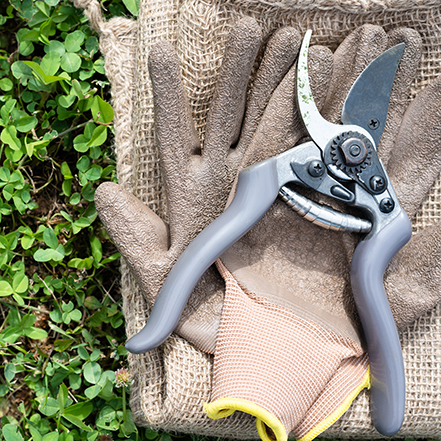
Equip yourself with a pair of sharp pruning shears or hedge trimmers and don sturdy gardening gloves to protect your hands from sharp grass blades.
You'll need these tools for cutting back your grass:
- Pruning shears or hedge trimmers
- Gardening gloves
- Twine or bungee cords (if tying large grasses)
- Wheelbarrow, bags or a tarp for collecting cuttings
3. Grab and Gather the Grass
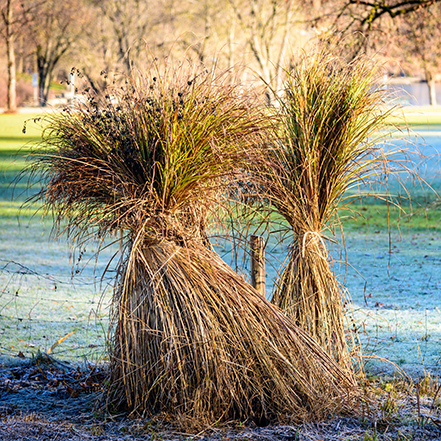
Start working from the ground up, and gather the grass into a tight bundle. Grab a bungee cord, or rope, or cut a few blades of the grass and get ready to tie the grass. Wind your cord of choice around the grass, tying a knot to keep the grass in place.
Step 4: Start Cutting Your Grass
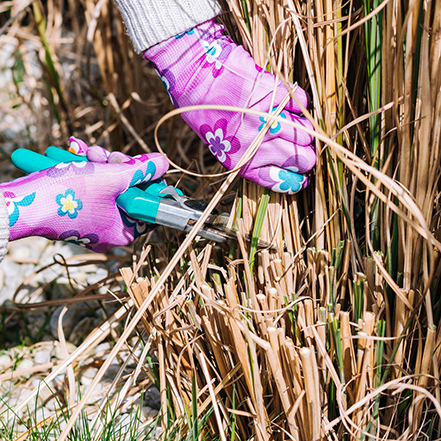
Use sharp, clean garden shears. Then begin clipping at about six inches above ground. You might notice a few green shoots sprouting up as you cut. This is a sign that your grass is healthy and happy. As long as you're cutting your grass before a big flush of new growth appears, it's a good time to keep cutting.
Step 5: Tidy Up
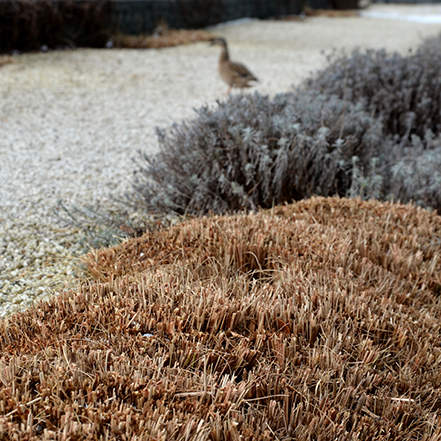
As you trim, collect the cuttings in a wheelbarrow or on a tarp to transfer to the compost pile if you have one. If not, transfer to biodegradable yard waste bags for disposal.
Once the bulk is gone, take the time to give one last, close trim. It’s not necessary, but it helps to make sheared grass clumps almost disappear into the garden.
Step 6: Remove Loose or Matted Grass
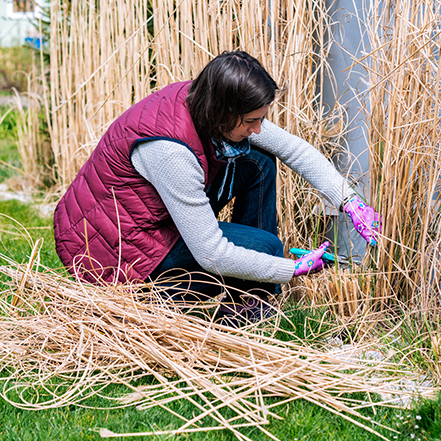
To come back strong once the weather warms, grass needs lots of air and light. Reach into the heart of the grass clump and remove any loose, dead, or matted material to allow air circulation and leave room for new growth.
Step 7: Watch for New Growth in the Spring
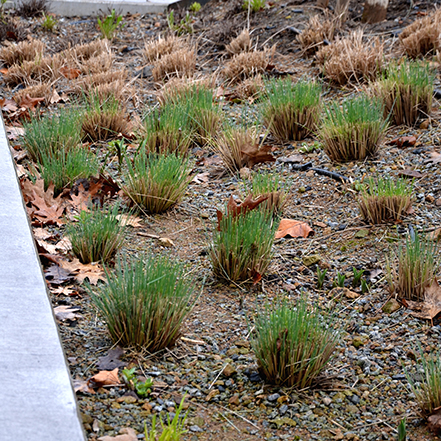
Your reward for this afternoon of work? Lots of vibrant new growth! You'll have lots of lush grass in your garden after a month or two, depending on when you did the pruning. Remember to water your grass during dry spells, add a top dressing of compost, and mulch to provide optimum growing conditions.
Favorite Ornamental Grasses
Blue Heaven
Little Bluestem
Perfect for bird-friendly landscapes, and creates a great vertical accent for a border, rock garden, or container. Emerges blue, develops pink and burgundy hues in late summer, and turns a rich copper in fall. Slender stems rise up with purplish panicles. Tan seed heads persist into fall. Full sun. Up to 4' tall, 3' wide. Zones 3-10.
Blackhawks
Big Bluestem
A dramatic vertical accent that changes color throughout the growing season. Foliage emerges green, then develops red-bronze hues towards the tips in summer. The color continues to darken to deep purple until almost black in fall. Purple plumes appear in late summer. Full sun. Up to 8' tall, 2' wide. Zones 3-9.
Prairie Dog
Switch Grass
A shorter switchgrass with sturdy stems that will hold up in snow, providing winter interest and shelter for birds. Airy, rosy summer blooms are held above cool blue foliage. Excellent planted in groups, or alone as a vertical accent. Full sun. Up to 4' tall, 3' wide. Zones 4-9.
Dwarf
Fountain Grass
An attractive grass highlighted by fluffy, buff-colored plumes that arch above the lush, green fountain of foliage. In fall the foliage turns a lovely golden russet color. Creates a terrific contrast when used among shrubs or as a backdrop in a perennial bed. Full sun. Up to 3' tall, 2' wide. Zones 4-11.
Elijah Blue
Fescue
Outstanding, icy blue coloration to this clumping ornamental grass holds up even through the heat of summer. Buff-colored plumes create eye-catching contrast. Perfectly suited for edging borders or mass planting as a groundcover. Drought tolerant when established. Semi-evergreen. Full sun. Up to 12" tall and wide. Zones 4-11.
Plumetastic® Pink
Muhly Grass
Stately, showy foliage with an exceptional, upright, slightly arching form. Glittering clouds of vivid purple plumes emerge 3 to 5 weeks later than Regal Mist®, lending far richer color from late summer to fall. Foliage stays green much longer than others of its type. Partial to full sun. Up to 3' tall. Zones 7-10.
Photo by Jennifer Cheung
Get More Plant Care Tips and Design Help
- Find your local garden center to ask if they carry the featured plants.
- Sign up for the Grow Beautifully newsletter. You'll get first access to exclusive digital design guides and webinar invites. Plus, receive helpful stories like these delivered straight to your inbox.
- Best Ornamental Grasses for Low-Maintenance Beauty
- 5 Ways to Design with Ornamental Grasses
- Browse stories with lessons from garden design experts
- Browse stories with plant care tips
Photo Credits:
1. Doreen Wynja; 2. HappyNati; 3. mcbrugg; 4. Wojciech Kozielczyk; 5. beekeepx; 6. Wojciech Kozielczyk; 7. beekeepx





